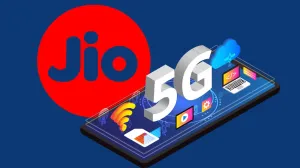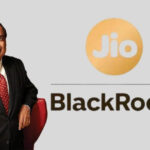Introduction
Reliance Jio, a dominant telecom operator in India, is again at the forefront of the next wave of digitization with its latest bold initiative. The company has formally approached the Department of Telecommunications requesting approval to re-assign its 26 GHz 5G spectrum to provide high-speed Wi-Fi.

Compared to the common sub, 6 GHz frequencies, mmWave frequencies, such as 26 GHz, can offer multi Gbps speeds completely benignly to densify urban areas, with their high bandwidth demand and significant risk of bandwidth congestion. This band is already being deployed as part of Jio’s 5G service rollout to feature up to 2 Gbps in some locations.
Background on 26 GHz Spectrum and 5G
The 26 GHz frequency band in the millimetre-wave frequency band covers around 24 to 40 GHz. Millimeter wave signals are the future of wireless communications and will offer the high capacity and high-speed connections consumers expect from 5G today. MmWave frequencies such as 26 GHz have extremely wide channel bandwidths compared to lower frequencies, enabling high data transfer speeds.
The 26 GHz band will allow us to experience ultra-high-speed internet service with incredibly low latency. This means better downloads, better video streaming, real-time video gaming, and greater capacity for other technologies such as augmented reality (AR), virtual reality (VR), and Internet of Things (IoT) devices. MmWave frequencies have a short range and can be physically interfered with by walls and weather. For many users who require high bandwidth simultaneously, mmWave can never be bested.
Reliance Jio has been a leading institution in utilizing the 26 GHz band of frequencies during their nationwide 5G rollout. The company even reported that, via this spectrum, they could record a historical peak download speed of a maximum of 2 Gbps, the most remarkable aspect being that this markedly illustrates the capacity that mmWave provides in reforming mobile broadband in India.
Jio’s Proposal for Wi-Fi Services
Reliance Jio’s overall strategy is to diversify its spectrum usage and seek new sources to enable urban broadband connectivity. In the past, the 26 GHz band has been allocated and utilized primarily for mobile 5G services and to provide super-fast wireless internet on the move.
The Jio proposal aims to use this spectrum to provide fixed wireless access via Wi-Fi technology. Jio introduced Wi-Fi services using the 26 GHz frequency band to directly offer high-speed, assured internet connectivity to residences, workplaces, and public places, particularly urban and highly populated areas.
Regulatory Framework and DoT Approval Process
Like any other spectrum band available in India, the 26 GHz band is managed under strict rules enforced by the Department of Telecommunications. One of the rules that governs the use and distribution of the spectrum now NR and NB is the National Intra Auction (NIA) scheme, which was established in July 2022 to allow the transparent and careful management of spectrum assets. The NIA guidelines contain several provisions under which the licensees’ spectrum licenses are granted extensive terms of use specified in their license.
For instance, a clause in the NIA guidelines will determine the type of service that may be used under the frequency band. Switching from mobile broadband services to Wi-Fi or fixed wireless access will be subject to prior approval from the DoT. This provision keeps spectrum use in agreement with national policy goals and objectives, keeps interference disputes to a minimum, and promotes fair competition amongst all market participants.
For Jio Reliance, this means that Jio Reliance’s application to repurpose the 26 GHz band for Wi-Fi cannot be acted upon without the approval of DoT.
Potential Impact on Urban Broadband Connectivity
Reliance Jio is particularly promising for large metros, where network congestion and slower internet speeds are common issues. Highly concentrated urban cities have unique challenges to broadband access, including signal interference, congestion of the network, and insufficient space for network equipment. High frequency 26 GHz band’s high bandwidth capacity can accommodate more simultaneous connections with minimal latency. The band is ideally positioned to facilitate innovative city applications like public services based on IoT, traffic management systems, public safety networks, and digital kiosks that require quick, secure, and low-latency internet.
Urban Wi-Fi today operates most frequently in the 2.4 GHz and 5 GHz bands, both of which are prone to overload from indiscriminate usage from numerous devices and networks. While Wi-Fi 6 and 6E technologies possess improved capacity and performance, they are also limited in delivering reliably high speeds in crowded spaces.
Conversely, the 26 GHz mmWave spectrum band can deliver a much larger amount of throughput and lower latency and is thus an excellent addition to existing Wi-Fi services. Compared to fibre optic broadband, which requires extensive physical installations, 26 GHz Wi-Fi is wireless and offers immediate, lower-cost means to last-mile connectivity.
The rollout of 26 GHz Wi-Fi services would close critical gaps in urban internet connectivity, providing faster, more reliable connectivity to businesses, residences, and public spaces. This technology would supplement India’s bigger digital transformation goals and give city residents wider access to high-speed internet.
Industry Implications and Competitive Landscape
Reliance Jio’s action might be a precedent for rivals like Bharti Airtel and Vodafone Idea to follow suit. As most operators hold mmWave spectrum licenses, this potential to use such high-frequency bands in providing fixed wireless broadband services like Wi-Fi can provide new income chances and make them more diversified. It could increase rivalry, drive innovation, and reduce consumer prices as operators diversify their offerings.
Traditionally, mmWave bands such as 26 GHz have predominantly been used for mobile broadband to offer super high speeds to mobile customers. However, telecom operators are considering hybrid usage models with growing demand for fixed broadband with high capacity, especially in suburban and metropolitan locations.
The flexible use of the spectrum at 26 GHz likely promises great innovation in how broadband services will be delivered, with operators able to innovate new forms of broadband services based on Wi-Fi with gigabit speeds and low latency, ideally suited to high, end applications such as cloud gaming, immersive VR/AR experiences, and enterprise connectivity. Using mmWave frequencies for Wi-Fi may expedite the rollout of smart city infrastructure, IoT networks, and public hotspots with enhanced performance. It could introduce new business models, such as managed Wi-Fi services, to enterprise and home customers without mobile broadband services.
Jio’s offer is neither simply a redistribution of the spectrum nor merely a blatant attempt at acting as disruptive innovation. It may reflect a transformation in how the Indian telecom sector can optimally deploy technology to differentiate its service and stay ahead of changing consumer behaviours. Competition will likely be more dynamic, with a greater emphasis on spectrum flexibility, innovation of services, and quality of user experience over the intense focus on megabits of bandwidth alone.
Challenges and Considerations
Although the prospects for using the 26 GHz band for Wi-Fi type uses appear positive, several hurdles and considerations must be overcome for this to succeed.
The 26 GHz band falls under the millimetre wavelength, which is useful in terms of technical possibilities. Still, they have some physical shortcomings, including the reduced distance that can be traversed compared to lower bands. mmWave signals struggle to penetrate barriers such as walls, trees, and buildings and can also be diminished by weather. As a result, considering a Wi-Fi service offering over the 26 GHz band would require a network of small cells or access points with a very high density to achieve coverage, especially in cities with many physical barriers.
Conclusion
The approval process that Reliance Jio initiated to reallocate the 26 GHz 5 G spectrum for use as Wi-Fi represents a significant advance in the telecommunications landscape in India. The organization continues to demonstrate its tradition of innovation and its goal of bringing ultra-fast, reliable, and scalable broadband to address the increasing digital needs of India’s urban population.
The blend of 5G and Wi-Fi, aided by the possibility of using 26 GHz, opens the door to new innovative city projects, additional IoT, and higher-quality digital service possibilities for high-speed connectedness. As India embarks on its fast-paced digital transformation journey, service providers achieving this kind of innovation in spectrum usage will be central to ensuring India is in the lead in global connectedness trends.
FAQs
1. What does the 26 GHz spectrum mean, and why is it significant?
The 26 GHz spectrum is part of the millimeter-wave band, which is well-positioned to enable extremely high data speeds and low latency. It will play a significant role in future wireless technologies, such as 5G and Wi-Fi with high throughput.
2. What is Jio proposing to do with the 26 GHz spectrum?
Jio is asking the Department of Telecommunications (DoT) for approval to use its 26 GHz 5G spectrum to provide fixed wireless broadband using Wi-Fi services and not just mobile services.
3. How is this different from Wi-Fi?
Wi-Fi services are typically offered in the 2.4 and 5 GHz bands. Using the 26 GHz spectrum allows for significant increases in data speed, lower latency, and support for many concurrent users, especially in urban markets.
4. Can Jio change how it intends to use the 26 GHz spectrum?
The National Intra Auction (NIA) guidelines allow the DoT to approve any change in spectrum usage. Jio has made a formal request for this approval.
5. Why is this important to the urban marketplace?
Urban areas may have significant congestion and limited wired broadband infrastructure. 26 GHz Wi-Fi would allow more users to experience better speeds and a higher quality of service in a high, density environment without the installation cost of additional cabling.







